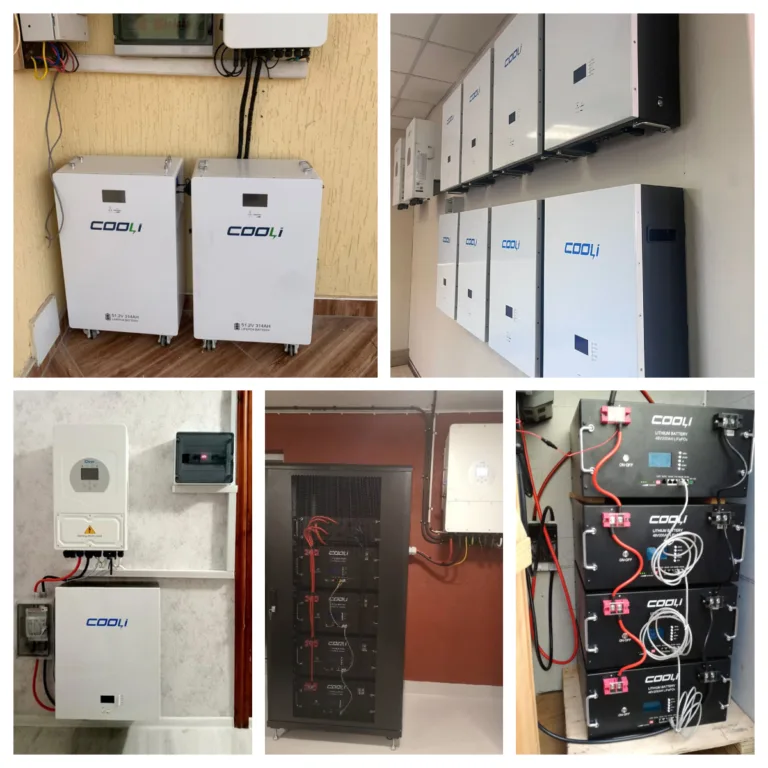Wall vs Rack Batteries: 7 Brutal Truths Buyers Need to Know
Wall vs Rack Batteries: Which Energy Storage Solution Wins for Your Needs?
If you’re researching energy storage for solar systems, off-grid setups, or backup power, you’ve likely encountered two key options: wall-mounted batteries and server rack batteries. Both have loyal advocates, but which one is right for your needs? Let’s cut through the noise and reveal the unvarnished truths about these two battery types.

What is a Wall Battery?
A wall-mounted battery is a compact, vertically installed energy storage unit designed to save floor space. These systems are popular in residential and small commercial settings due to their sleek, all-in-one design. Think of brands like Tesla Powerwall or LG Chem RESU—they’re often marketed as “plug-and-play” solutions for homeowners.
Key Features of Wall Batteries:
- Space-saving design: Mounts directly to a wall.
- Integrated components: Built-in inverters, cooling systems, and monitoring.
- Aesthetic appeal: Discreet, modern look.
- Lower capacity: Typically 5–15 kWh per unit.
What is a Rack Battery?
A server rack battery (or rack-mounted battery) is a modular, scalable system designed to fit into standardized server racks. These are commonly used in data centers, large-scale solar farms, and commercial/industrial applications. Examples include brands like BYD Battery-Box or Fortress Power’s eVault.
Key Features of Rack Batteries:
- Modular scalability: Stack multiple batteries in a rack for higher capacity.
- Industrial-grade durability: Built for heavy cycling and long lifespans.
- Cost-effective expansion: Add units incrementally as needs grow.
- Higher capacity: Systems can exceed 100 kWh when expanded.
Wall vs Rack Battery: 7 Brutal Truths
Let’s break down the critical factors that could make or break your decision:
1. Installation Space & Flexibility
- Wall Battery: Ideal for tight spaces (e.g., garages, small utility rooms). However, placement is fixed once installed.
- Rack Battery: Requires floor space for a rack but offers flexible configuration. Winner for scalability.
2. Upfront Cost vs Long-Term Value
- Wall Battery: Lower upfront cost (~$7,000–$15,000) but limited expansion options.
- Rack Battery: Higher initial investment for the rack and components but cheaper per kWh over time. Winner for long-term ROI.
3. Capacity & Energy Needs
- Wall Battery: Best for daily home use (e.g., offsetting peak rates, short outages).
- Rack Battery: Built for high-demand scenarios (e.g., off-grid living, commercial backup). Winner for high energy demands.
4. Maintenance & Repairs
- Wall Battery: Sealed units mean minimal maintenance but costly replacements if a component fails.
- Rack Battery: Individual modules can be swapped out, reducing downtime. Winner for repairability.
5. Lifespan and Durability
- Wall Battery: 10–15 years (varies by brand and usage).
- Rack Battery: Often 15–20+ years due to industrial-grade cells and replaceable parts. Winner for longevity.
6. Aesthetic vs Functionality
- Wall Battery: Blends into homes seamlessly.
- Rack Battery: Utilitarian look but prioritizes performance. Winner depends on priorities.
7. Safety & Cooling
- Wall Battery: Passive cooling may struggle in high-heat environments.
- Rack Battery: Active cooling systems in racks ensure stable temperatures. Winner for thermal management.
Who Should Choose Which?
- Wall Batteries Are For You If:
- You’re a homeowner with limited space.
- You prioritize simplicity and aesthetics.
- Your daily energy needs are under 20 kWh.
- Rack Batteries Are For You If:
- You need scalable storage (e.g., growing solar array).
- You’re off-grid or require backup for critical systems.
- Cost per kWh and long-term reliability are top priorities.
The Bottom Line
There’s no universal “better” option—only what’s better for your situation. Wall batteries excel in simplicity and space efficiency, while rack batteries dominate in scalability and durability. Before buying, ask:
- How much energy do I need now vs in 5 years?
- Can I afford to upgrade later, or do I need a future-proof system?
- Is aesthetics or raw performance more important?
By weighing these truths, you’ll avoid costly regrets and invest in a battery system that truly aligns with your goals.
Need help deciding? Share your use case in the comments, and we’ll guide you toward the right choice!
5kWh 5kWh battery backup for home 10kWh LiFePO4 Batteries 10kWh Solar Battery Costs in Myanmar 15kWh LiFePO4 Batteries 15kWh LiFePO4 Battery for Yemen 25kWh Battery Systems 48V 100Ah China LiFePO4 Batteries 48V 280Ah LiFePO4 Battery 48V 300Ah 48V Lithium Batteries Best LiFePO4 Batteries Engineered for Middle East Desert Bulk Buy Home ESS Cheapest Home Battery Custom Household Batteries Direct Factory Custom Lithium Batteries DR Congo Overseas Warehouse energy storage battery Energy Storage Systems Grade A Battery Home Batteries for Dutch Families home energy storage Lead-Acid to Lithium LiFePO4 batteries LifePo4 battery LifePO4 Battery Technology LiFePO4 vs NMC Home ESS Lithium-Ion Battery Lithium-Ion Battery Manufacturers Lithium Battery Manufacturer Lithium Battery Revolution lithium ion battery Lowest Price Uganda Market Trends off-grid solution Reliable Home Battery Bulk Suppliers Revolutionize Business Power with Customizable BESS Scalable BESS Solutions for Industry Solar Battery Storage Solutions Solar Panel solar system Stacking All-in-One Top 10 Home Battery Alibaba Suppliers Verified Wall-Mounted Lithium Batteries Wholesale 314Ah LiFePO4 Batteries







